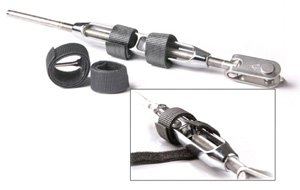Frank Langer
1984 Ericson 30+, Nanaimo, BC
The rig tuning guide for the 1984 E30+ suggests that there should be no mast rake or even much mast bend in the mast on the E30+. I have tuned it according to the suggestions (the guide is on this site under the downloads for the E30+), and the boat sails well in most conditions--rounds up a little when I let go of the wheel, rudder turned only slightly (about a 1/4 turn on the wheel, which I think turns the rudder less than 5 degrees) to keep her on course in 10 - 20 knot winds, and she holds her course nicely with just the wheel brake on if I set her up right.
However, I recently began talking with some sail makers about new sails, and they were each quite puzzled when I described that the mast was quite straight up without mast rake or mast bend. They think this is very unusual, especially for a fractional rig sailboat.
Can anyone explain why the E30+ is intended to be tuned with the mast straight (or have I misunderstood something in the tuning guide?). Are other E30+ owners tuning their rig differently--if so, with what results?
While I am very happy with how our boat sails, I am always trying to increase my knowledge and tweaking things on the boat to make her sail even better.
Thanks,
Frank
However, I recently began talking with some sail makers about new sails, and they were each quite puzzled when I described that the mast was quite straight up without mast rake or mast bend. They think this is very unusual, especially for a fractional rig sailboat.
Can anyone explain why the E30+ is intended to be tuned with the mast straight (or have I misunderstood something in the tuning guide?). Are other E30+ owners tuning their rig differently--if so, with what results?
While I am very happy with how our boat sails, I am always trying to increase my knowledge and tweaking things on the boat to make her sail even better.

Thanks,
Frank
Last edited:

